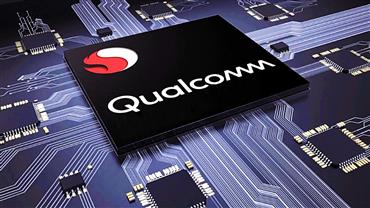 Qualcomm sees an opportunity to grow in the PC market in India, where personal computer penetration remains low.
Qualcomm sees an opportunity to grow in the PC market in India, where personal computer penetration remains low.
Qualcomm has been leaning on artificial intelligence to gain a foothold in the personal computer market. The San Diego-based company has demonstrated that its ARM-based chips can deliver significant performance and efficiency gains, along with long battery life, in the high-end PC market. Now, the world’s largest seller of smartphone processors aims to bring strong performance and improved battery life to mainstream computers.
The company sees the end of Windows 10 support as a major opportunity, driving consumers in India to switch to AI PCs for the first time. This marks a big test for Qualcomm as it aims to push AI PC prices down to as low as Rs 65,990, hoping that consumers will choose its Snapdragon X Series-based laptops over competing devices from Intel and AMD.
2025 marks an inflection point with the end of Windows 10 support. There is a strong trajectory of consumers that are going to refresh their PCs, and we believe that providing them with access to a PC at a price point that is the sweet spot of what an Indian consumer is used to buying gives them access to being able to do that,” Kedar Kondap, SVP (Compute & Gaming), Qualcomm, told indianexpress.com on the sidelines of the launch of AI PCs powered by the new Snapdragon X chip in Delhi.
The Snapdragon X chip, which consists of an 8-core Oryon central processor, a graphics component and a dedicated AI chip, will run Microsoft Corp.’s Copilot+ software. The new Snapdragon X platform joins the existing Snapdragon X Plus and X Elite and will be available in a variety of devices from major PC makers including Lenovo Group, Dell Technologies, Acer, Asus, and HP in the coming months.
Kondap said he sees an opportunity for Qualcomm to grow in the PC market in India, where personal computer penetration remains low. He said the company plans to replicate a strategy similar to the one it used to build the smartphone market in India. “If you look at where the phone market started, it was in single digits and grew all the way up to 50 per cent. We are hoping that, with a focus on K-12 education and making AI PCs accessible to students, they will be able to do much more. This should lead to significant growth over the next three to five years,” he said.
Although Qualcomm is lowering the price of AI PCs — which still include a 45 TOPS NPU supporting Microsoft’s Copilot Plus features and should broaden their appeal — a fundamental problem remains: compatibility. Windows has traditionally run on x86 processors from Intel and AMD, and every Windows application is compiled and optimised for that architecture. Qualcomm’s PC chips run on an ARM-native version of Windows, but to support legacy applications, they rely on a software emulation layer. This is a similar approach to what Apple uses with its ARM-powered Macs.
Kondap cited Microsoft data stating that 93 per cent of the apps consumers use on PCs are native ARM apps. “Most of the applications that consumers use are already native. For example, take Netflix, WhatsApp, or Amazon Prime, these apps are already optimised. Google has also committed to this, with Chrome already running natively. So, many of the applications that consumers rely on today are already native to Snapdragon.”
Analysts expect that PCs may eventually become an important business for Qualcomm, but this depends on how quickly AI PCs gain popularity and the maturity of the Windows on ARM ecosystem. For now, however, Qualcomm remains a new player in the PC segment, and Intel and AMD don’t have much to lose, as both companies have been accelerating their efforts to offer AI PCs at various price points.
However, Apple remains a quiet challenger to Qualcomm in the AI PC race. Qualcomm’s less expensive AI PCs compete directly with Apple’s MacBook Air, which is often available at a discount online but features a generation or two older processors.
“We are not looking to compete with an N minus 3 or N minus 4 generation. I think we’re pretty well established, especially since we’re the only ones supporting next-gen AI with 45 TOPS and enabling all of these experiences. So, we feel pretty good about the roadmap,” said Kondap.
PC makers shipped 14.4 million units (inclusive of desktops, notebooks, and workstations) in India in 2024, marking a 3.8 per cent year-over-year (YoY) increase, according to the International Data Corporation (IDC) Worldwide Quarterly Personal Computing Device Tracker. In 4Q24, the total market grew by 6.9 per cent YoY, driven by a 9.6 percent YoY growth in the notebook category, where premium notebook shipments (priced above US$1,000) grew by 13.8 per cent YoY in 2024.